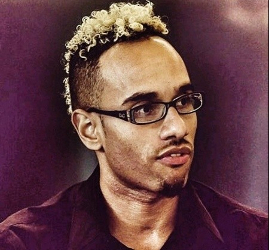Value created when AI and humans interact
By Gary Hunt, CAE, OSCPA communications director
The value in accountants’ use of artificial intelligence “is about optimizing human interaction at the right moment,” said Chris Ortega, senior finance manager at Emarsys. In short, AI helps to maximize resources; then, a CPA can step in with the knowledge needed to make a decision.
 “Technology is going to automate the scorekeeping we do,” Ortega said. “Where we are going to win is value advising.”
“Technology is going to automate the scorekeeping we do,” Ortega said. “Where we are going to win is value advising.”
We’ve spoken with Ortega in the past about the opportunities created by new technology, and the buzz on this topic has only increased in recent months. We caught up with him recently at the Columbus Accounting Show, where he explained how businesses should carefully plan how they introduce, implement and integrate artificial intelligence. That process begins with an understanding of what AI encompasses.
Simply put, artificial intelligence is a program than can sense, reason, act and adapt. Machine learning is a subset of AI that consists of “algorithms whose performance improves as they are exposed to more data over time.
“Think of artificial intelligence as the school of business,” Ortega said. “Machine learning is accounting and finance within the school of business.” Deep learning – predictive and prescriptive analytics – is “a subset of machine learning in which multilayered neural networks learn from vast amounts of data.”
Ortega said such technology is used to drive decision cycles: it creates data, which is turned to information humans can use to make decisions.
“Once you have data, you need an algorithm,” he said. “This has created a whole new profession; did anyone know what a data scientist was three years ago? ... Their whole job is to build algorithms to understand all that data.”
Perhaps ironically, all this technology ends up helping organizations place their time and attention on their most important resources: people.
“The biggest challenge in our organizations is going to be keeping talent,” Ortega said. “One of the best pieces of information you can get is by asking your people, ‘How likely is it, on a one to 10 scale, that you would recommend becoming a part of our team to a friend?’”
